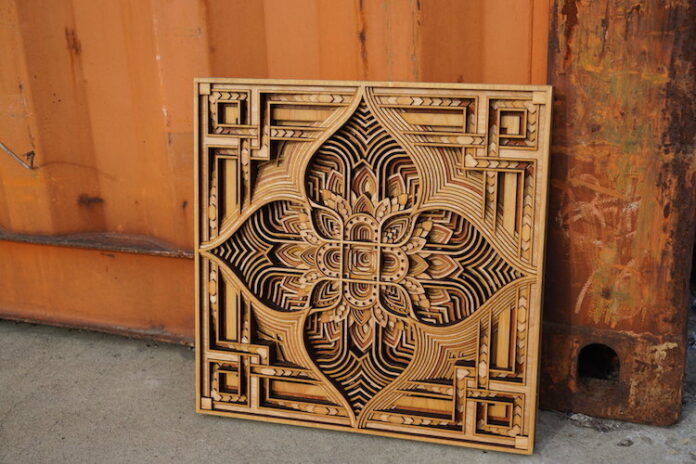Honestly, the first time I saw a laser cutting wood in action, I stood there way longer than I should have, totally mesmerized by this beam of light carving through timber like it was butter. But here’s what really got me excited – when you explore laser cutting wood options, you’re not just looking at a cool manufacturing process, you’re opening up design possibilities that traditional woodworking tools could never touch. We’re talking about intricate patterns with tolerances measured in thousandths of an inch, complex geometries that would take master craftsmen weeks to achieve by hand, and repeatability that means your design vision gets executed exactly as intended every single time. After diving deep into different wood species, cutting techniques, and design applications, I’ve realized we’re living through a genuine revolution in what’s possible with wood as a design material.
Laser Technology and Wood Interaction
The physics of laser cutting wood is actually pretty fascinating stuff. CO2 lasers operating at 10.6 microns wavelength get absorbed really efficiently by the cellulose and lignin in wood, which means clean cuts with minimal heat-affected zones. Typical power densities run 10,000-50,000 watts per square centimeter at the focal point.
Different wood species react very differently to laser energy. Hardwoods like maple and cherry cut with incredibly clean edges because their dense, uniform grain structure absorbs laser energy consistently. Softwoods like pine can be trickier – the resin content sometimes causes flare-ups or uneven burning that affects cut quality.
The moisture content sweet spot for most laser cutting applications sits between 6-12%. Too dry and you get excessive charring, too wet and you need higher power settings that can cause heat damage to surrounding material. Some operations actually condition their wood stock to specific moisture levels before cutting.
Wood Species Performance Characteristics
I’ve been amazed at how differently various wood species perform under laser cutting. Baltic birch plywood has become the gold standard for a reason – multiple thin plies with minimal void areas mean consistent cutting behavior and excellent edge quality across the entire sheet thickness.
Hardwoods like hard maple produce edges that are almost furniture-ready straight off the laser table. The high density means slower cutting speeds but incredible precision – we’re talking about holding tolerances under 0.1mm on complex geometries. Cherry develops this gorgeous darkened edge from the laser heat that actually enhances the visual appeal.
Exotic species open up interesting possibilities too. Bamboo plywood cuts beautifully and the natural grain variations create really striking visual effects. Some tropical hardwoods like purpleheart actually change color along the cut edge from the laser heat, creating natural accent lines.
Pattern Complexity Capabilities
Here’s where laser cutting really shines – pattern complexity that would be impossible with traditional tools. I’ve seen single pieces with thousands of individual cut elements, all executed with perfect consistency. Nested geometries where pieces fit together with tolerances tighter than human hair thickness.
Kerf width management becomes crucial for complex patterns. Most wood cutting applications use 0.1-0.3mm kerf widths, which means you need to account for material removal in your design calculations. Software compensation helps, but understanding how kerf affects part fit-up is essential for successful projects.
Some of the most impressive work involves gradual pattern transitions – imagine a decorative screen where the cut pattern gradually changes from dense to open across the panel width. This kind of parametric design would be nearly impossible with conventional cutting methods.
Surface Treatment Effects
The laser cutting process creates unique surface characteristics that can be enhanced or modified through various treatments. The slight charring that occurs during cutting can be embraced as a design element – many projects use the natural darkened edge as visual contrast against the raw wood color.
For applications requiring clean edges, light sanding removes the char layer and reveals fresh wood underneath. Some operations use air assist or nitrogen cutting environments to minimize charring altogether, though this reduces the cutting speed significantly.
Engraving capabilities add another dimension entirely. Variable power settings allow for different depths of surface removal, creating relief patterns or texture variations within the same piece. Combined cutting and engraving operations can produce incredibly sophisticated visual effects.
Thickness and Scale Considerations
Laser cutting capabilities vary dramatically based on material thickness. Quarter-inch materials cut quickly with excellent edge quality, while thick sections – 2 inches or more – require multiple passes and careful power management to avoid excessive heat buildup.
The relationship between cutting speed and edge quality creates interesting design trade-offs. Complex patterns with lots of direction changes require slower cutting speeds to maintain accuracy, while simple geometric cuts can run at maximum machine speeds.
Large format capabilities are expanding rapidly too. Some operations can handle full sheet goods – 4×8 foot panels – which opens up architectural applications that were previously impossible. Room dividers, decorative panels, even structural elements become feasible with laser cutting precision.
Design Software Integration
Modern laser cutting workflows integrate seamlessly with standard design software. Vector graphics from Illustrator or CAD drawings from Fusion 360 can drive cutting operations directly, with software that automatically optimizes tool paths for efficiency and quality.
Nesting algorithms maximize material utilization by arranging cut patterns to minimize waste. Some software can achieve 85-90% material utilization on complex projects by intelligently arranging parts within sheet boundaries.
Parametric design tools are game-changers for pattern work. Instead of drawing thousands of individual elements, you define the pattern logic and let the software generate variations automatically. Want to try different hole sizes or spacing patterns? Change a few parameters and regenerate the entire design instantly.
